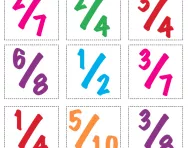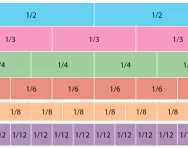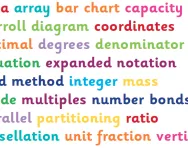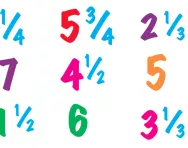Important update from TheSchoolRun
For the past 13 years, TheSchoolRun has been run by a small team of mums working from home, dedicated to providing quality educational resources to primary school parents. Unfortunately, rising supplier costs and falling revenue have made it impossible for us to continue operating, and we’ve had to make the difficult decision to close. The good news: We’ve arranged for another educational provider to take over many of our resources. These will be hosted on a new portal, where the content will be updated and expanded to support your child’s learning.
What this means for subscribers:
- Your subscription is still active, and for now, you can keep using the website as normal — just log in with your usual details to access all our articles and resources*.
- In a few months, all resources will move to the new portal. You’ll continue to have access there until your subscription ends. We’ll send you full details nearer the time.
- As a thank you for your support, we’ll also be sending you 16 primary school eBooks (worth £108.84) to download and keep.
A few changes to be aware of:
- The Learning Journey weekly email has ended, but your child’s plan will still be updated on your dashboard each Monday. Just log in to see the recommended worksheets.
- The 11+ weekly emails have now ended. We sent you all the remaining emails in the series at the end of March — please check your inbox (and spam folder) if you haven’t seen them. You can also follow the full programme here: 11+ Learning Journey.
If you have any questions, please contact us at [email protected]. Thank you for being part of our journey it’s been a privilege to support your family’s learning.
*If you need to reset your password, it will still work as usual. Please check your spam folder if the reset email doesn’t appear in your inbox.
What are fractions?
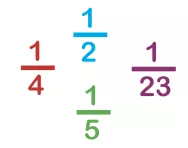
Hearing the word ‘fractions’ can often put fear into any parent. However, fractions are not as scary as they seem and there are many ways we can support our children when they bring fractions homework back from school.
What are fractions?
A fraction represents a part of a whole. It's made up of two numbers: the numerator (the top number, representing the part you have) and the denominator (the bottom number, representing how many equal parts the whole is divided into). For example, in the fraction 3/4, 3 is the numerator and 4 is the denominator. This means that you have 3 out of 4 equal parts of the whole.
When are fractions taught?
Fractions are introduced gradually throughout the primary years, with each year building on the last. Whilst they might sound complex, children as young as Year 1 begin to learn about these vital maths concepts. Here is a brief overview of the learning across the primary phase from the National Curriculum:
- Year 1: Children start by dividing shapes and sets of objects into halves and quarters.
- Year 2: They continue to work with halves and quarters and start to write simple fractions. For example, they might write 1/2 to represent half a shape or half a set of objects.
- Year 3: Children start to work with a wider range of fractions. They learn that the numerator can be greater than 1 (for example, 2/3) and start to find fractions of a set of objects (for example, finding 1/4 of 12 objects).
- Year 4: Children learn to add and subtract fractions with the same denominator and start to find fractions of quantities (for example, finding 3/4 of 20).
- Year 5: Children start to work with mixed numbers (numbers that include both a whole number and a fraction, like 1 3/4) and learn to add and subtract fractions with different denominators.
- Year 6: Children learn to multiply and divide fractions and to find fractions of quantities. They also learn about decimal equivalents of fractions (for example, that 0.5 is the same as 1/2).
Do fractions appear in the Year 6 SATs?
Yes – fractions will appear throughout the Year 6 SATS papers. There are usually many questions on Paper 1 that involve working with fractions. These questions can range from basic operations to more complex problem-solving tasks.
Here are some ways fractions might appear in the Year 6 SATS papers:
- Basic operations: Children might be asked to add, subtract, multiply or divide fractions. This could involve fractions with the same or different denominators and could also involve mixed numbers.
- Fractions of quantities: Children might be asked to find a fraction of a quantity. For example, they might be asked to find 2/3 of 18.
- Equivalent fractions and decimals: Children might be asked to find equivalent fractions or to convert fractions to decimals. For example, they might be asked to write 0.75 as a fraction.
- Comparing and ordering fractions: Children might be asked to compare or order fractions. This could involve fractions with the same or different denominators.
- Problem solving: Some questions might involve using fractions to solve problems. For example, a question might describe a situation and ask the child to use fractions to find the answer.
How can I help my child with fractions?
There are many ways you can support your child's understanding of fractions at home:
- Use everyday objects: Use objects like food, toys or building blocks to explore fractions. For example, you could divide a pizza or a bar of chocolate into halves or quarters or share a set of toys between children.
- Play fraction games: There are many fun games that can help your child practise fractions. For example, you could play a fraction matching game where they have to match fraction cards to pictures of fractions.
- Cook together: Cooking and baking are great ways to explore fractions. Your child can help you measure ingredients, and you can talk about how the measurements represent fractions of the whole recipe.
- Use online resources: There are many online games and interactive activities that can help your child practice fractions. These can make learning about fractions fun and engaging.
- Practise SATS questions: There are loads of example SATS style questions online that you can use to help your child learn about and practise identifying and using different fractions.
Remember, fractions are not as scary as they sound. The key to understanding them is practice. The more your child works with fractions, the more comfortable they'll become with the concept.
